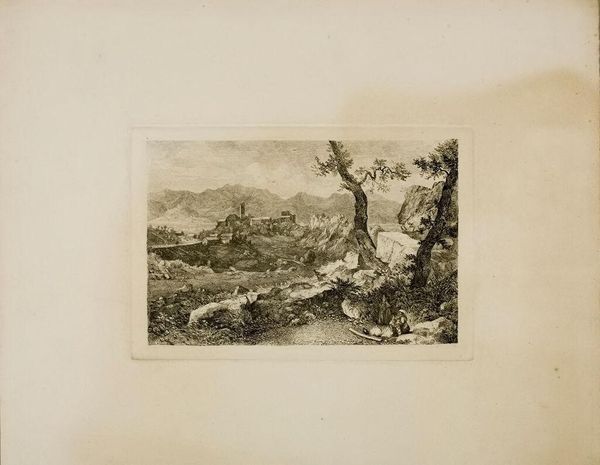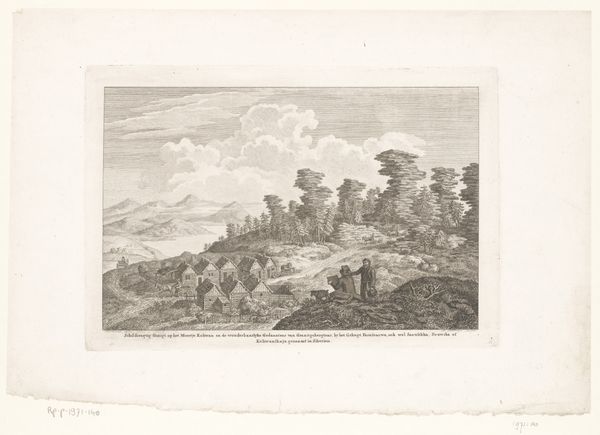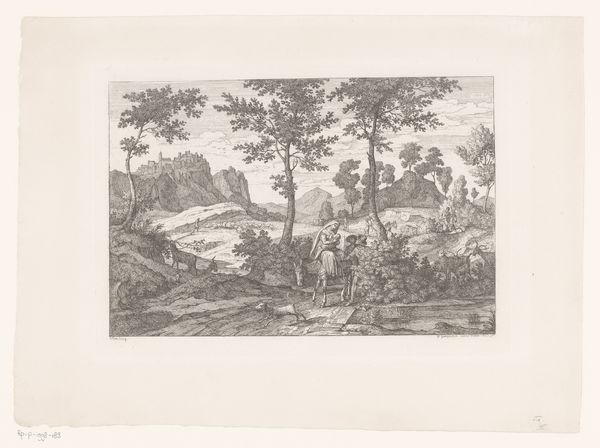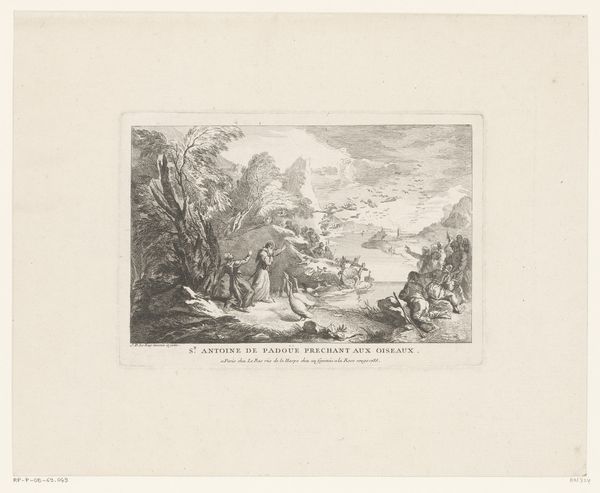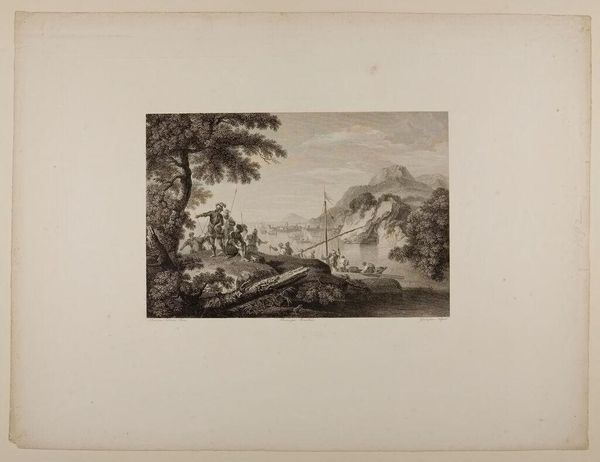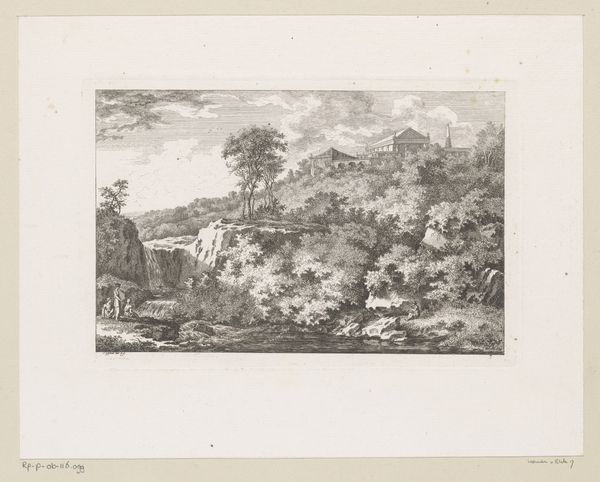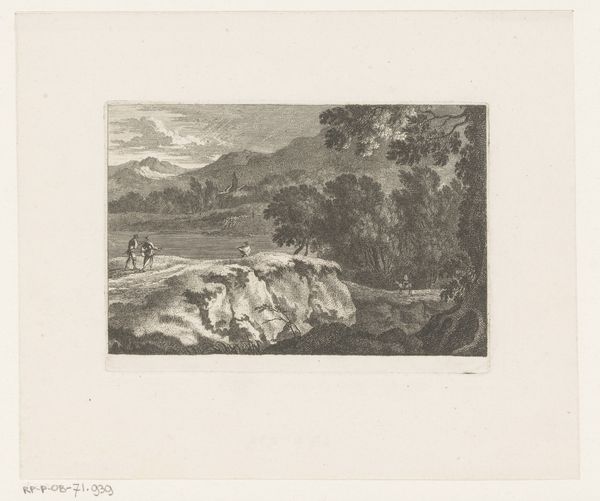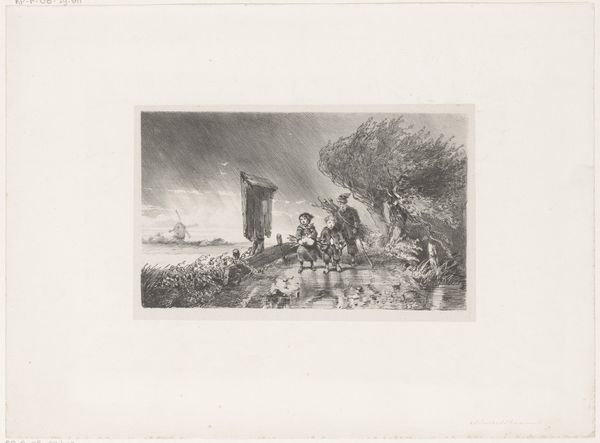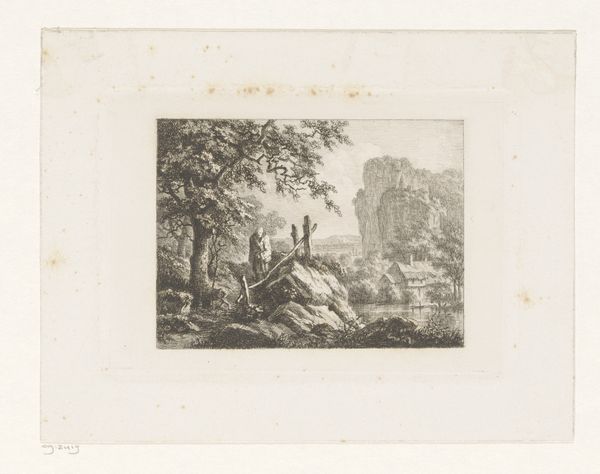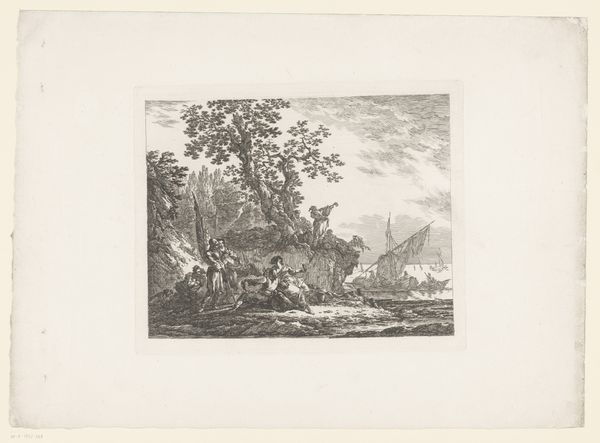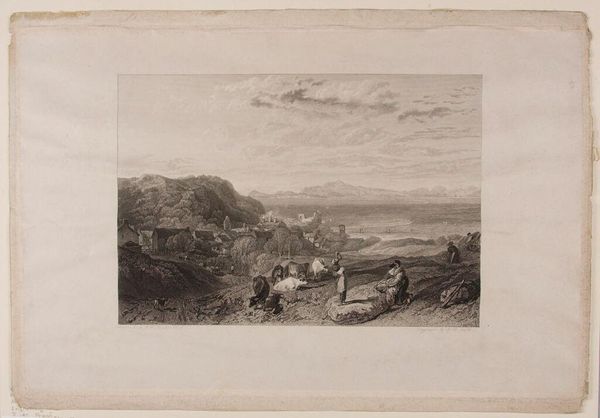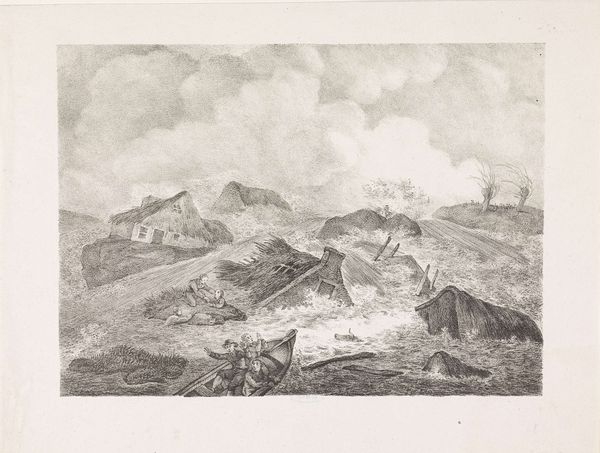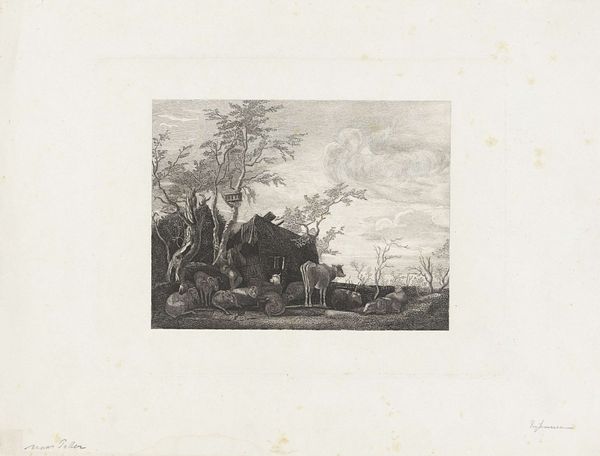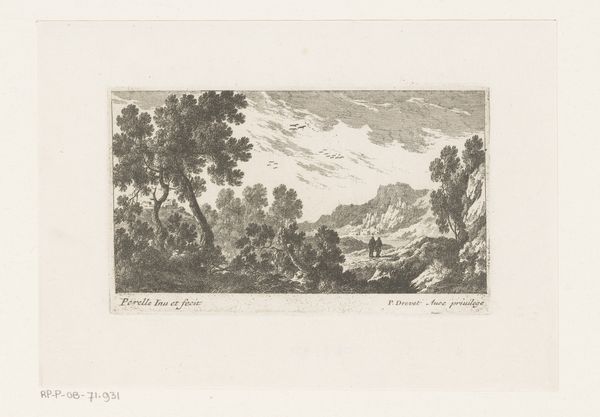
Sneuvelen van Frederik Willem van Brunswijk tijdens de slag bij Quatre-Bras, 1815 1815 - 1816
0:00
0:00
print, pencil, charcoal, engraving
# print
#
pencil sketch
#
landscape
#
charcoal drawing
#
pencil drawing
#
romanticism
#
pencil
#
pencil work
#
charcoal
#
history-painting
#
engraving
Dimensions: height 237 mm, width 296 mm
Copyright: Rijks Museum: Open Domain
Editor: This engraving, created between 1815 and 1816 by Reinier Vinkeles, depicts “The Death of Frederick William of Brunswick at the Battle of Quatre-Bras, 1815.” It's a stark and unsettling depiction of a battle scene, but the details are captivating. What historical context is important for interpreting this piece? Curator: Considering the image was made so closely after the actual event, its immediate purpose may have been commemorative but was undoubtedly political as well. Who was Frederick William, and why would his death be depicted so prominently? Think about the socio-political climate following the Napoleonic Wars. Editor: So, Frederick William was a Duke, and from what I remember from history, he fought against Napoleon. Given that this image is in the Rijksmuseum, I imagine his death was a significant loss for the Dutch and their allies. Curator: Exactly. This image serves as a potent example of history painting functioning as propaganda. Vinkeles immortalizes a hero who resisted Napoleonic domination. Consider how the engraving – as a readily reproducible medium – disseminated this message throughout society. Notice, too, how Romanticism romanticizes war and dying for one's country. Do you see this, too? Editor: Definitely, though the fallen bodies at the forefront complicate that. The scene is both glorious and gruesome. Was it common to portray battle scenes this way? Curator: To an extent. Artists often walked a fine line between glorifying conflict and acknowledging its human cost. Prints like these became vital in shaping public opinion, contributing to national narratives, and constructing heroes. And you also might think about how later generations viewed Romantic images of battle: Did they believe them? Editor: It's interesting to think about how art plays such a role in constructing our understanding of the past. I'll certainly look at history paintings differently now. Curator: Indeed. By considering the historical, social, and political contexts surrounding art, we gain a deeper understanding of its purpose and impact.
Comments
No comments
Be the first to comment and join the conversation on the ultimate creative platform.
